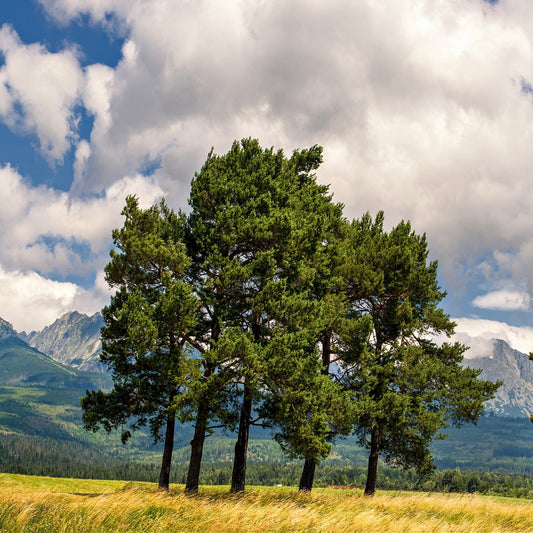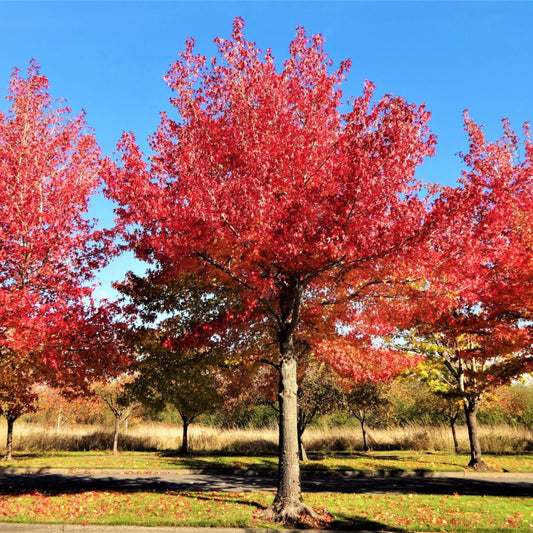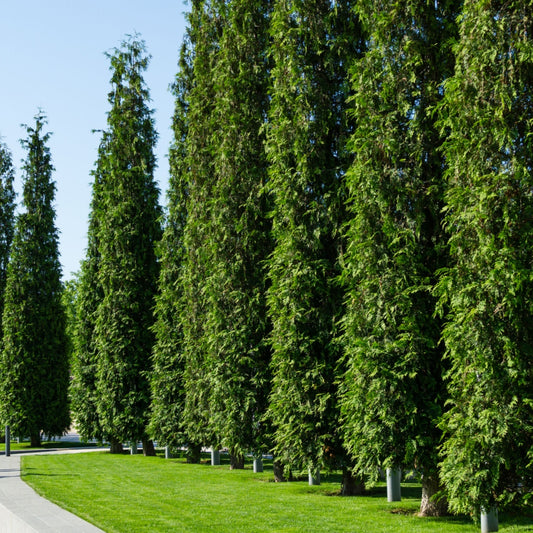Trees Improve Air Quality, Help With Summer Heating Costs, and Are Aesthetically Pleasing To Landscaping
Trees reduce air pollution by absorbing rainfall while filtering water. They will reduce the overall impact of stormwater and flooding. An ordinary one adds beauty because it attracts many birds and wildlife.
They help by improving the Environment and Adding Natural Beauty. When you incorporate a native plant into any landscape setting, you also contribute to the overall beauty and health of the entire environment.
They also provide shelter to creatures and add nourishment. Natural surrounding tends to breed beautiful and peaceful settings. A tree will reduce noise pollution as it matures and spreads its branches through the atmosphere. There are many reasons to add a tree to any yard space:
* A natural coolant
* Cleaner air
* Stress reduction in gardening
* Increases a home's value
* Added landscape appeal
* An increase in the Oxygen levels
Tn Nurseries Best Selling Trees
1. Red Maple
2. Tulip Poplar
3. Sugar Maple
4. Dogwoods
5. Mulberry
Trees remain a critical asset in landscaping, providing significant benefits. The challenge for many property owners involves deciding which one best serve their needs and interests. Residential and commercial property owners must consider the mature height and width when planting them near buildings.
It’s also essential to consider factors such as direct sunlight, soil conditions, and other environmental influences to ensure your trees thrive. That’s why landowners typically conduct due diligence or consult with a tree nursery professional. It may also prove helpful to consider the following benefits and popular ones in your decision-making process.
Benefits of Trees in Landscaping
In terms of landscaping assets, they typically require less maintenance and care than other plants. They produce deep root systems and withstand incidents such as drought and flooding.
People usually select them because they provide full shade and iconic fall foliage. All of these positives support improved property values. However, the following benefits are sometimes overlooked.
- Enhanced Comfort: Integrating them into a property promptly creates shaded areas. The type of tree you select does not necessarily have to enjoy a wide limb spread. Planting throughout the property peppers it with comfort spaces.
- Save Money: Strategically integrating deciduous species near your home can reduce the direct sunlight it receives during the hot summer. This can reduce the use of air conditioning and save money. During the cold winter months, leaves fall to the ground, allowing direct sunlight to warm your home.
- Environmental: They naturally process carbon and produce fresh air for people and wildlife. They help filter rainwater as it trickles into the aquifer we drink. Planting them also augments the habitat options of birds and other wildlife.
- Windbreak: Farmers and landowners with large tracts often plant rows of trees to serve as a protective windbreak. These natural barriers remain less expensive and more effective than fencing.
Residential and commercial property owners find that investing in them proves a wise decision. When incorporated into a landscape design, they generally help increase property values.
Popular Trees to Consider Planting on Your Property
Although we carry a comprehensive inventory of landscaping plants, the Weeping Willow, Maple, and Oak are highlighted for their popular uses, helping you make informed decisions about how to incorporate them into your lawn for success.
We hope these examples prove valuable.
- Weeping Willow: The Weeping Willow ranks among the most iconic shade trees. This graceful tree matures to over 40 feet, thrives near water sources, and grows approximately 24 inches annually. Best known for its widespread that reaches 35 feet, it remains one of the most popular shade tree assets.
- Maple: A wide range of Maple Trees can be selected for landscaping based on fall foliage. Varieties such as Red, Silver, and Sugar offer fascinating and colorful leaves. Some varieties reach heights of up to 70 feet or more.
- Oak Trees: Like Maples, Oak trees also enjoy the diverse fall foliage. Oak varieties include White, Red, and Pin, among others, and can reach heights of up to 100 feet. Many landscaping professionals utilize these because they withstand high winds, resist pests, and the acorns support wildlife.
Willow, Maple, and Oak trees are considered mainstays in landscaping because they deliver shade, habitat benefits, and eye-catching fall foliage. If you consider adding trees to your landscape, we have a complete inventory of healthy choice. Contact our nursery today.


















